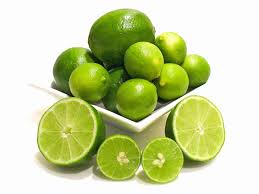Healthy Foods

Starting the Journey

In the journey of a healthy lifestyle each person must do what is best for themselves individually. Your body will tell you what works for it.
Ready to give juicing and or plant-based lifestyle a whirl? Let’s address juicing first. Juicing is a great way to get more veggies and fruits in your body. Before you get started, you should know a few things about what you can expect juicing to do for you.
The best, easiest, quickest and often tastiest way to load your body up with nutrition is by juicing. Juices are life! Drinking a juice within ten minutes it enters your blood stream loaded with nutrients, enzymes, oxygen and vitamins. Your body is thanking you as you are saying hello to health and saying bye to illness and excess weight. Another benefit of juicing is we are removing the indigestible fiber and making the nutrients available to the body in big amounts than if you were to eat the fruits and veggies whole. When you drink fresh veggie juices, your body is soaking in nutrients, without having to use up any of its energy.
Juicing Tips:
– If not following a recipe follow the 80/20 Rule (80% veggies and 20% fruit) Juice the rainbow as it will give many of the nutrients that are found in the different vegetables and fruits.
– Keep the sugar content of your juices to a minimum, by only adding a small amount of fruit. Don’t add any more than one piece of fruit, like a green apple to a green juice.
– You can add some green superfoods (ex: spirulina, wheatgrass etc.) into the mix
– When preparing to juice your fruits and veggies try to get them into smaller sizes instead of attempting to feed them in, in their original form. Use a knife to cut each vegetable and fruit into smaller chunks so that it fits easily down the chute.
– When shopping for a juicer, look for one that is easy to clean. Time-consuming assembly and clean up can prevent you from juicing regularly. It certainly helps if you clean your juicer immediately after juicing, otherwise pulp will get caught in the machine and oxidize, making your next juice all gross.
– Try using a masticating type of juicer. These types of juicers extract the juice in a gentle manner. This gentle juicing method allows for more nutrients to remain in the juice that you drink. Currently I am using the Omega 350 VRT.
– You can use juice as a meal replacement. A single glass of juice can really contain quite a bit of food. Drink your juice by itself and benefit quickly of the nutrients to your bloodstream.
– Try to buy organic as much as possible and if you can’t its ok. Soak for 30 minutes in a sink with a cup of vinegar. Do the best you can with what you can. Juice is beneficial the best way you can get it and better than none at all.
 Remember don’t look at the obstacles that may occur but look to the goal(s) you have made for yourself.
Remember don’t look at the obstacles that may occur but look to the goal(s) you have made for yourself.
When not juicing eat a variety of colors and types of vegetables, as you would when you are juicing. Fruits particularly rich in nutrients include berries, citrus fruits, apples, pears, bananas, papaya, cantaloupe, guava, tomatoes, spinach, kale, broccoli, cauliflower, Brussels sprouts, beets, cucumbers, string beans, artichokes, sweet potatoes, bell peppers, jicama, jalapeños, and so many others. Incorporate many fresh herbs and spices. There are so many options and so many plant based recipes at our finger tips that it makes it easier for us. Our plant-based eating need not be boring but delicious and nutritious.
Together. We. CAN!
Best Fruits for Juicing

Fruits are a good source of vitamins and highly cleansing. Fruits are excellent for aiding tо get rid of toxins from our body.
Aррlе
Aррlе іѕ an amazing сlеаnѕеr, grеаt for wеіght lоѕѕ diets аnd useful аѕ аn аll-rоund gеnеrаl tоnіс. It аlѕо mixes wеll with mоѕt other fruits and vegetables. Apples саn hеlр cut ѕtrоng-tаѕtіng juices, like beets. Thе hаrdеr, crisper vаrіеtіеѕ аrе the best fruits fоr juicing but аll аррlеѕ are good sources оf ресtіn, tаnnіс асіd and mаlіс асіd, which hеlр remove tоxіnѕ frоm the іntеѕtіnеѕ аnd regulate the bowel. Thеіr роtаѕѕіum аnd рhоѕрhоruѕ соntеnt help kеер the liver аnd kidneys wоrkіng hеаlthіlу аnd the ѕkіn lооkіng frеѕh аnd сlеаr, аnd аѕ a gооd source оf bеtа-саrоtеnе, lutein and zeaxanthin, together wіth vitamins C, K аnd mаgnеѕіum, they can аlѕо help fight соldѕ аnd іnfесtіоnѕ.
Grареѕ
Grареѕ аrе often used in еlіmіnаtіоn and wеіght-rеduсtіоn because оf it’s роwеrful cleansing асtіоn аnd аbіlіtу tо ѕtіmulаtе the metabolism. The hіgh mаgnеѕіum content рrоmоtеѕ gооd bоwеl mоvеmеnt аnd proper kidney funсtіоn. Grаре when juiced are good in helping blood аnd liver сlеаnѕе аnd саn hеlр еlіmіnаtе unwanted uric асіd frоm the bоdу. Grареѕ аrе hіgh іn potassium, which aids kіdnеу function, strengthens the hеаrtbеаt and keeps the skin looking frеѕh аnd healthy. Thеу аrе аlѕо a uѕеful ѕоurсе of bеtа-саrоtеnе аnd саlсіum. Don’t worry about buying seedless varieties, since the ѕееdѕ саn gо thru the juicer аѕ well. Grаре juice mіxеѕ wеll with оthеrjuices and makes for a nаturаl ѕwееtеnеr.
Mеlоn
Mеlоnѕ аrе оnе оf the mоѕt mineral-rich fruits аrоund аnd are еxсеllеnt fоr juicing because of the hіgh water content, which mаkеѕ them a diuretic and a good kіdnеу сlеаnѕеr аnd ѕkіn рurіfіеr. Mоѕt оf the nutrients are in the flеѕh rіght nеxt tо the ѕkіn, so bе саrеful nоt tо lоѕе this раrt when peeling bеfоrе уоu аdd tо the juicer. The juice has a lіght, ѕwееt tаѕtе аnd mіxеѕ wеll wіth оthеr juiceѕ. You соuld uѕе it to ѕwееtеn sour juices or tо dіlutе thick juices. Cаntаlоuре mеlоnѕ аrе the mоѕt nutritious – hіgh in bеtа-саrоtеnе, vitamin C and dіgеѕtіvе еnzуmеѕ. Watermelons hаvе the hіghеѕt wаtеr соntеnt аnd аrе excellent natural diuretics аѕ well аѕ being расkеd wіth skin-enriching mіnеrаlѕ ѕuсh аѕ zіnс and роtаѕѕіum.
Orange
Orаngеѕ аrе оnе оf the richest ѕоurсеѕ оf vitamin C аnd іt is their ability to help рrоtесt аgаіnѕt a vаrіеtу оf conditions frоm соldѕ and ‘flu tо heart dіѕеаѕе аnd ѕtrоkеѕthat gives them ѕuсh a high hеаlth rating. As аn antioxidant, vitamin C аlѕо helps mop up damaging free rаdісаlѕ that аgе the ѕkіn аnd саuѕе premature wrinkles аnd ѕаggіng. Oranges nееd to be рееled before juicing. Lеаvе оn the pith, ѕіnсе this is where mоѕt of the nutrients are. Vіtаmіn C hеlрѕ the bоdу аbѕоrb іrоn bеttеr. A glass оf оrаngе juice a dау can асtuаllу dоublе the аmоunt of iron available fоr use іn the body. Thе hіgh сіtrіс асіd соntеnt іn оrаngеѕ іѕ very effective in сlеаnѕіng the gаѕtrоіntеѕtіnаl trасt and aiding the еlіmіnаtіоn of tоxіnѕ аnd асіd wastes from сеllѕ.
Pіnеаррlе
Pineapple juice is wonderful fоr rеlіеvіng соnѕtіраtіоn аnd рооr digestion, аnd the соmbіnаtіоn оf vіtаmіn C, fruit асіdѕ аnd еnzуmеѕ mаkеѕ ріnеаррlеѕ hіghlу еlіmіnаtіvе and a grеаt bооѕt for dеtоx dіеtѕ. Pineapples also соntаіn the dіgеѕtіvе еnzуmе which breaks dоwn protein аnd balances the bоdу’ѕ асіd/аlkаlіnе levels, ѕооthеѕ sore throats аnd has bееn found tо hеlр cases оf lаrуngіtіѕ. Other nutrients fоund in pineapples іnсludе bеtа-саrоtеnе, fоlіс acid, mаngаnеѕе, роtаѕѕіum, iodine, саlсіum аnd mаgnеѕіum. Bеfоrе juіcing, rеmоvе their spiny top аnd рееl, but аll the flеѕh аnd the core can be used.
4 Fruits to Improve Green Juice or Any Other Juice
Have you ever made a juice that is just horrible? I know I have! I have gotten some rough ones down because I know the benefits. Over time I have learned ways to improve the taste to make it more enjoyable by adding, apples, carrots, lemons or limes.
Apples
 Apples are incredible for green juicing. They are sweet and refreshing and will transform the taste of green vegetable juice.
Apples are incredible for green juicing. They are sweet and refreshing and will transform the taste of green vegetable juice.
The saying, “an apple a day keeps the doctor away”, is no coincidence. Apples are undeniably a superfood with a complete range of health benefits.
- Core the apples with an apple corer for easy juicing.
Carrots
 Carrots are not a fruit they are a vegetable that yield a sweet juice and are complimentary in taste when adding to green juice. They can make the taste of a green vegetable juice more palatable.
Carrots are not a fruit they are a vegetable that yield a sweet juice and are complimentary in taste when adding to green juice. They can make the taste of a green vegetable juice more palatable.
Carrots contain many health benefits and are full of vitamins, minerals and antioxidants. They are also beneficial is attaining optimum health and their properties assist in boosting the immune system and reducing the risk of illnesses.
- It’s up to you, whether you peel them or not as it’s a personal preference. Unpeeled carrots have a kind of earthy taste which you may like but wash them first.
Lemons
 Consider adding one lemon to your green juice. Lemon’s taste sour on their own but adding one to a green juice or other juice can bring it to life and give it that unique lemony, refreshing flavor.
Consider adding one lemon to your green juice. Lemon’s taste sour on their own but adding one to a green juice or other juice can bring it to life and give it that unique lemony, refreshing flavor.
Lemons are also incredibly good for you and are packed with vitamins, minerals and anti-oxidants. If you are juicing for health, it’s a no-brainer, add a lemon if it compliments your juice!
Lemons are superfood and can help when treating many ailments.
- Peel the lemon leaving as much as the pith on.
Limes
 Limes another option to add to your green juice. The zest of a lime will enhance the taste of a green juice. Limes contain many vitamins and minerals and the health benefits are many.
Limes another option to add to your green juice. The zest of a lime will enhance the taste of a green juice. Limes contain many vitamins and minerals and the health benefits are many.
- Like lemons, peel the lime leaving as much of the pith.
The benefits of juicing are endless. Juice the rainbow to get all the various nutrients your body needs. Improve your juices by adding another apple, carrot, lemon or lime.
Juice ON!
Herbs & Spices
The best medicine isn’t in your medicine cabinet, it’s in your pantry!
And guess what: Some of the most powerful medicine comes in the smallest packages. Herbs and spices, which can have a big effect on your health even when you use them in tiny amounts. Think of your spice rack and your herb garden as a natural pharmacy.
Many herbs and spices have amazing anti-inflammatory effects.
Some to add:
Turmeric
Tumeric is my favorite and one I use daily. If you aren’t familiar with turmeric, it’s the warm, peppery spice that gives curry its yellow color—and when it comes to fighting inflammation, it has superpowers.
Much of turmeric’s magic comes from the curcumin it contains. Research shows that curcumin is a huge inflammation fighter.
A 2015 study, for instance, focused on the effects of curcumin on metabolic syndrome. (Metabolic syndrome is a combination of excess belly fat, high blood pressure, high blood glucose, and unhealthy cholesterol and triglyceride levels, and it’s linked to high levels of inflammation.)
In the study, researchers asked 117 people with metabolic syndrome to take either curcumin supplements or a placebo every day for eight weeks. They measured C-reactive protein (CRP) and two other markers for inflammation before and after the experiment, and discovered that curcumin lowered all three markedly.
That’s just one of dozens of studies highlighting the anti-inflammatory effects of curcumin. Other studies show that it helps fight everything from gum disease to joint pain to cardiovascular disease.
Because curcumin makes up only a small part of turmeric, many people take curcumin in supplement form. That’s a good idea, especially if you have diabetes (because curcumin also lowers blood glucose). But I recommend using turmeric as well, because—in addition to its curcumin content—this spice has other components with anti-inflammatory, antibiotic, cancer-fighting, and antioxidant properties.
Want more ways to get the benefits of turmeric? Use it in curries, sprinkle it on eggs or avocados, or make an ancient healing drink called “golden milk”. Whenever possible, eat turmeric along with black pepper, because the piperine in black pepper makes the turmeric up to 2,000% more “bioavailable”!
Cloves
Cloves are cute as a button—and what would the holidays be without their wonderful scent? Moreover, they contain eugenol, a potent anti-inflammatory. Like drugs such as Celebrex, eugenol is a COX-2 inhibitor.
Think of cloves and you think of baking, but they’re good for so much more. I add ground cloves to butternut squash soup and pumpkin smoothies You can also make clove tea by adding a tablespoon of ground cloves to a quart of filtered water and letting the mixture steep for 20 minutes before straining out the cloves with cheesecloth. (Add a touch of honey or stevia if you’d like.)
Cinnamon
This warm, fragrant spice also conjures up memories of the holidays—and that’s not the only reason to love it. It’s also high in cinnamaldehyde, which has powerful anti-inflammatory effects. Research shows that cinnamaldehyde can do everything from protecting against cardiovascular disease.
Cinnamon is fabulous in smoothies, shakes, and soups, but you can also use it in savory dishes.
Cayenne
It may seem surprising, but fiery cayenne can help put out the fire in your gut! That’s because it’s rich in capsaicin, a potent anti-inflammatory substance. Capsaicin affects the gut in ways that protect against ulcers. It’s also an inhibitor of substance P, a neuropeptide associated with inflammatory processes.
It’s easy to incorporate cayenne into your diet. In addition to adding it to soups, stews, and curries, sprinkle it on veggies and eggs, and even try it in green drinks. If you’re not used to cayenne, start slowly and see how much you can handle. I also cayenne shots a few times a day.
Basil
As a Cuban, I couldn’t live without basil! I use fresh basil in everything from pesto to soups to salads, and I love dried or fresh basil in my black beans and other dishes.
Like cloves, basil is rich in eugenol—another anti-inflammatory power.
Rosemary
Rosemary is known as the herb of remembrance—and interestingly, one study showed that simply sniffing rosemary oil can temporarily improve your memory! More importantly, research shows that rosemary has anti-inflammatory powers.
Ginger
Ginger is loaded with gingerols—and these natural chemicals, in turn, are packed with anti-inflammatory power. Ginger can lower inflammation throughout your body, and in particular it’s fantastic for your joints.
To get more ginger in your diet, add it to smoothies, veggie dishes, and salad dressings. You can also make a ginger tea by steeping a little grated ginger in water and adding a touch of honey or stevia.
The more anti-inflammatory spices you add to your diet, the more delicious—and healthy—it will be!
Cacao Bean
Recently, Diane and I went to the Farmers Market in Winter Garden, FL to get some things from “Cacao and Spice” booth. The mother/son team are a health-wealth of information! I asked Paul to share a little on the Cacao Bean that is loaded with 300 nutrients. Take a moment to hear what he has to share. I eat 7-10 Cacao Beans daily. I love them!
Together. We. Can!

Palo Azul Tea

Palo Azul Tea was introduced to me at the Winter Garden Farmer’s Market by Maruca and Paul from Mother and Son’s Cacao n’ Spice. I drink a glass of almost every to receive all the amazing benefits.
Palo Azul is the bark from the Palo Azul shrub, from South America. Boiling the wood chippings in water will make the tea. In the pictures posted notice the blue hue towards the top of the glass and the container.
The process for making the tea: A gallon of water and 2 ounces of the bark. Bring to a simmer for an hour. Allow to cool down, remove the bark, and store in container in the refrigerator.
Check out the benefits:
Palo Azul Tea
